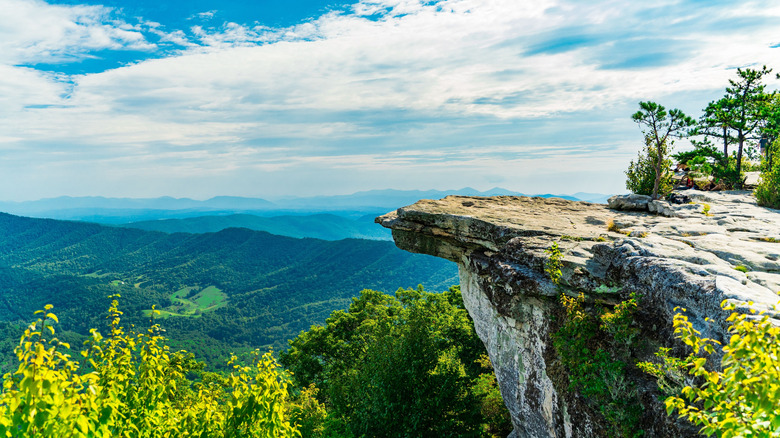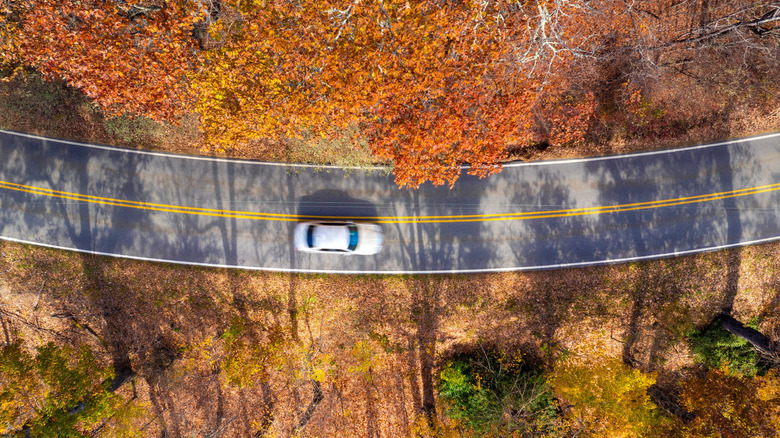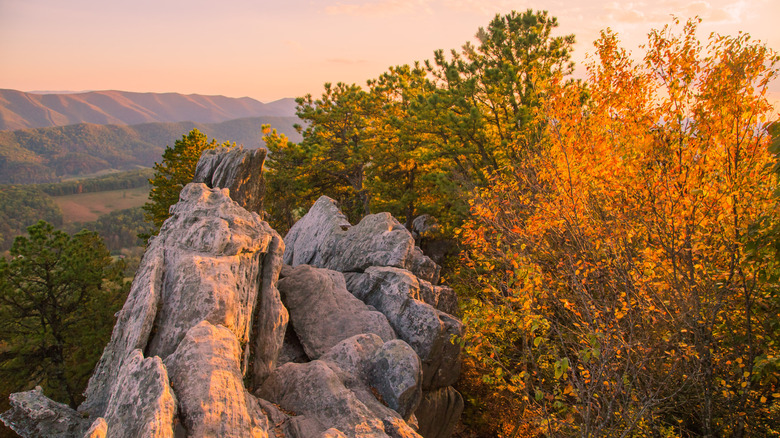Virginia's Blue Ridge Hideaway Boasts Sweet Scenic Trails And Winding Roads With Unmatched Views
In a scenic valley on the outskirts of Roanoke, Virginia, lies the tiny community of Catawba and its just over 1,300 residents. The community was one of the earliest settlements in Roanoke County, with the first farmers moving to the area in the mid-1700s. Before the Civil War, the Roanoke Red Sulphur Springs Resort drew visitors to the area, but that facility is now a hospital.
Catawba is now a famous stopover on the Appalachian Trail (AT), with many local rentals specializing in accommodations for hikers. The area was once on every AT hiker's map for the now-closed Homeplace Restaurant. The family-style eatery provided outstanding Southern comfort food to hungry hikers and foodies alike. Today, the sleepy community is better known for its collection of trailheads to some of Virginia's best hiking and a few vacation rentals to suit visitors, no matter how they arrived.
But even if there's now a lack of homestyle cooking, Catawba's proximity to Roanoke and Blue Ridge attractions like the Appalachian Trail, Blue Ridge Parkway, and Virginia's best fall road trip, Skyline Drive, all make it a wonderful gateway to any mountain getaway. And if you come by car, there are plenty of dining options just a few minutes away in the city and plenty of fun and scenic mountain roads where you can employ your driving skills.
Hiking and trekking around Catawba
If there's one thing that the Catawba Valley has no shortage of, it's hiking opportunities. The region's three most famous attractions are McAfee Knob, Tinker Cliffs, and Dragon's Tooth. Sometimes called Virginia's Triple Crown, these three hikes attract roughly 70,000 visitors annually. Dragon's Tooth is a particularly picturesque section of the AT, with a trailhead near Catawba providing access to the challenging 4.6-mile out-and-back.
Here, Virginia Tech maintains the Catawba Sustainability Center, a 377-acre farm used for research and teaching. The parking lot provides access to the Catawba Greenway, a 2.9-mile circuit that connects to the AT and McAfee Knob overlook. McAfee is one of the most popular and Instagrammable spots on the AT — a bucket list destination for many hikers. Tinker Cliffs, accessed from the Andy Layne Trailhead about 8 miles north of Catawba, also offers up impressive panoramic views. Finally, check out Carvins Cove Natural Reserve, nearly 7 miles up the road. This Roanoke city park offers about 60 miles of hiking, mountain biking, and equestrian trails and a beautiful reservoir for paddling or fishing.
Half the fun of visiting the mountains is the adventure of getting there; after all, who doesn't love driving on a winding mountain road? Most of the local routes snaking along ridges and dipping through valleys offer up outstanding scenery and exhilarating twists and turns. While the Blue Ridge Parkway gets all the headlines, scenic drives can also be found on U.S. Highways 311, 220, 460, and 221, the road to Floyd, a small Southern town with a booming arts scene. These highways meander around the Catawba area and the surrounding towns, making every car ride an adventure.
The view from Catawba
Catawba might feel a world away from civilization, but it's only a few minutes from Roanoke and Blacksburg, a funky college town filled with cafes and charm. The nearest airport is Roanoke-Blacksburg Regional, with flights from nine U.S. cities, including hubs like Atlanta and Charlotte. The airport is only a 20-minute drive from Catawba.
Tiny Catawba doesn't have many choices when it comes to places to stay. However, a quick search of Airbnb and Vrbo will reveal some pleasant surprises, including a fully outfitted glamping tent on Rising Ridge and a luxuriously renovated barn. If you're willing to commute a bit, there are far more choices in Roanoke. It's a little more than 20 minutes to get to the center of town, and spots on the outskirts are even closer.
Virginia's Catawba Valley has a high enough elevation to cut the summer heat and make a pleasant retreat. In the middle of July, average highs are 84 degrees Fahrenheit, but the humidity is significantly less than you'll find in the Piedmont, which considerably reduces the number of muggy days you're likely to experience.


